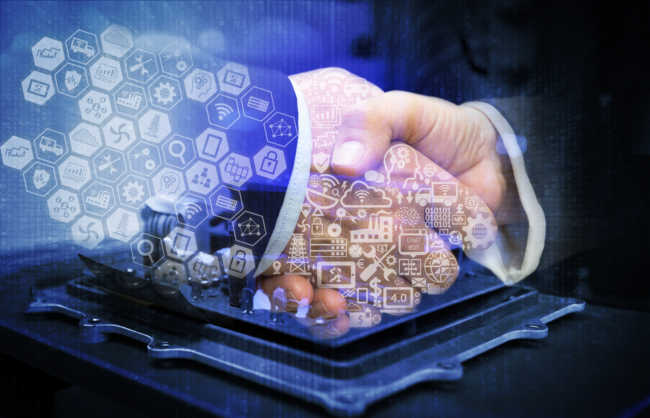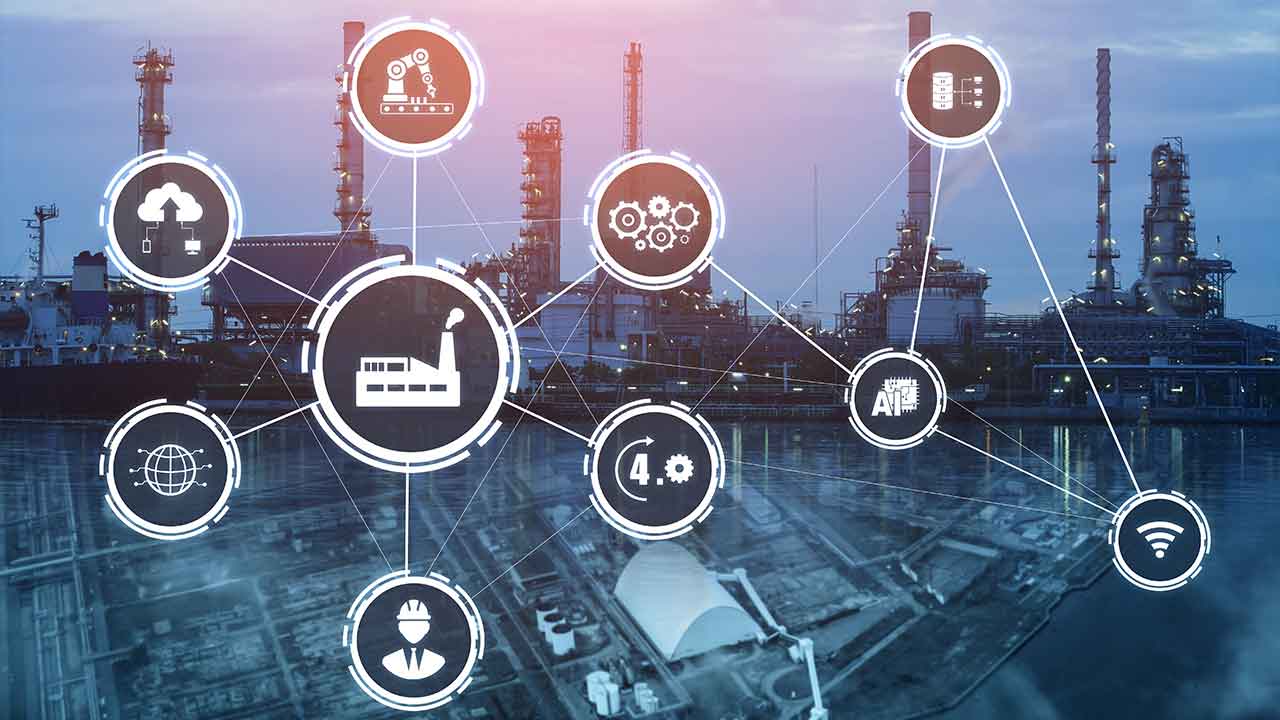Answering your burning IIoT questions with Cyril Perducat, EVP of IoT & Digital Offers, Schneider Electric
As any manufacturing company embarking on a digital transformation journey, you want to be more productive and more energy-efficient — all while managing the unknowns such as unpredictable market conditions, geopolitical/trade impacts, and ever-changing consumer demands. Whether large and small, industrial enterprises are looking to IIoT as a way to handle these variables within the reality of constraints (budget, legacy equipment, rapid response, etc.).
Your ongoing questions are always relevant. How do I assess the IIoT’s business value? How do I prioritize projects and bring ROI to fruition quickly? What are the risk involved with digital transformation? We know that your goal is not necessarily to integrate IIoT capabilities in order to capture more data. Instead, you need to achieve specific business goals.
I am pleased to have had the recent opportunity to speak with Lucian Fogoros about the state of IIoT today. Below, I answer some of your burning questions here on IIoT World:
Prioritizing IIoT Investments
Aldo Ferrante, President & CEO, ITC Technologies: Within the ecosystem of IIoT solutions for manufacturing available today, which platforms in the market are going to allow for an enterprise team of internal domain experts and SMEs on particular pieces of equipment or processes to deploy machine learning (ML) solutions addressing predictive maintenance (PdM) and process optimization applications that have the biggest potential for ROI?
Honestly, we never speak about “which platform” first. At Schneider, we look at IoT platforms as an enabler and a tool. No IoT platform can solve specific business problems. That’s why we need to combine platform capabilities with domain expertise. So we don’t sell a platform; instead, we sell solutions (connected products; edge control; and apps and services) by leveraging deep domain expertise to solve known customer problems such as improving productivity, digitizing aging equipment, and becoming more energy efficient and sustainable. This is EcoStruxure™.
Lucian Fogoros, Co-founder, IIoT World: How can I prioritize IIoT investments?
The best advice we give customers today is to start small and be very specific. What is the concrete business problem you need to solve? With so many challenges to tackle, focusing on the “right ones” is critical to ensuring that your priorities can be addressed successfully. For example, a hospital customer needed to protect uptime (a must-have) while also optimizing infrastructure maintenance (a nice-to-have). It’s very important to keep in mind that you don’t have to solve every problem at the same time, thereby allowing the “must-haves” to rise to the top of your efforts.
Aldo Ferrante, President & CEO, ITC Technologies: How can maintenance and reliability engineers implement automated ML/predictive analytics technologies to derive predictive insight and build ML models from their application without having to engage expensive consultants or build out infrastructure teams of data scientists and data engineers?
That’s where looking to applications and digital services is critical, especially for small and medium businesses. This type of digital service connects you to huge data lakes, with data models built on years of data from similar equipment and environments, to make predictive alarming and response more accurate. If you are building ML models, it’s worth leveraging a digital ecosystem – a collaborative community of partners — where you can leverage the capabilities of the data engineers in the ecosystem, as well as technology partners that can provide existing applications (SaaS) that can be enriched by specializing for the exact requirements of the end user. The benefits of this approach reach all ecosystem stakeholders: insights that streamline the industrial enterprise’s maintenance budgeting and scheduling (protecting uptime), on the one hand, and better data for the data engineers to improve their own models, on the other hand.
Cybersecurity for Industrial Enterprises
Nick Rea, VP of Market Development, RunSafe Security: What is Schneider doing to cyber-harden its ICS products?
As we all know, the convergence of IT and OT has opened up the OT layer, including Industrial Control Systems, to a much greater attack surface. A digital risk strategy is a must. Schneider takes a Cybersecurity by Design approach, integrating Cybersecurity at every stage of a secure product development lifecycle. This end-to-end strategy extends from ideation to commercialization, across the supply chain, and through customer deployment.We know that in the digital world, no company can become a castle, so a holistic strategy to mitigate digital risk is critical. This posture includes learning from any and every incident and communicating lessons learned across our digital ecosystem and customer base. You can learn more about our Cybersecurity by Design approach in our recent white paper on this topic.
Nick Rea, VP of Market Development, RunSafe Security: Is Schneider planning to develop in-house solutions or leverage third-parties?
Cyril Perducat, EVP of IoT & Digital Offers, Schneider Electric: Both. Cybersecurity is an area of expertise within our internal IoT & Digital Offers team, which works with our businesses to embed cyber at the ideation phase of offer development. In addition, Schneider places a high priority on strengthening cybersecure digital innovation through an extended enterprise approach that includes strategic partnerships with best-in-breed technology providers, customers, startups, universities, and developers. This ecosystem advances co-innovation and the development of our EcoStruxure solutions while also providing an open community for developers. Examples of this digital ecosystem approach include a partnership between Schneider and Claroty, a specialist in providing visibility and security to OT networks; collaborative development and management of a Security Operations Center (SOC) with IBM; and the creation of incident response teams that strengthen resilience and responsiveness. We also offer Industrial Cybersecurity Solutions to extend our expertise to customers. Some services include assessment, securing legacy infrastructure, and cyber training.
Accelerating Digital Transformation
Antonio Santos, Atos Social Media Business Evangelist. Lead for Social Activation and Training Community Manager: How do you empower a diverse growth mindset and avoid the trap of silo decision making?
It all starts with building, communicating, and encouraging a culture of openness, diversity, and inclusion. Empowering employees to be innovative is a big part of this culture — one that is the foundation of changing a traditional industrial enterprise such as Schneider into a thriving digital enterprise that’s leading the digital transformation of energy management and industrial automation. As digital flattens the organization, it’s important to change the organizational mindset to inspire employees to drive digital innovation by thinking beyond traditional industry boundaries, working across businesses to share capabilities and expertise, and to feel a sense of ownership in advancing our digital transformation.
Claudia Mendes Silva, Project Manager at Siemens and Ambassador for Women in Tech: What is the big challenge in digitization to make it accessible to all?
Start small, be specific about your business needs, take advantage of digital service offers, and connect with a digital ecosystem of partners that can help scale solutions to your business needs. This advice applies to small and medium industrial companies as well. You don’t need to capture the value of IIoT and digital transformation alone. Solo companies can’t solve the long-tail problems with technology. Today, ecosystems will rise to the top of the digital landscape.
Juan de la Cruz, IoT and Roaming Platforms Specialist, Telefonica Business Solutions: Typically, how long does it take for an IoT project to come to fruition according to your data? From the beginning of the commercial deal until the point the project goes life?
With our Digital Services Factory, an internal engagement model, we have converged digital expertise and capabilities (e.g., cybersecurity, pervasive sensing, AI) with our lines of business and their deep domain and customer expertise. In doing so, we have shortened the digital product development cycle from 2-3 years to less than a year. We partner with @Accenture to drive this engagement model for digital offer development across our businesses.
Marcia Gadbois, Founder of ADISRA: You mention 480,000 sites deploying EcoStruxure and 1.7 million assets under management. Can you give us any breakdown of where, what countries/regions, internal versus external that are deploying EcoStruxure?
We deploy our offers globally. The key point here is that we leverage a multi-hub approach and an extended enterprise that includes partners who can localize with our customers according to specific regulations and other unique needs. For example, our network of system integrators enables us to remain close to customers and to the local ecosystem and, in turn, respond better to their tailored expectations.
Lucian Fogoros, Co-founder, IIoT World: What about the IoT Edge?
As we all know, the cloud was — and remains — huge. The phenomenon of cloud computing led to life-changing digital services (e.g., a revamped Netflix business model). Now, more than a decade later, we’re taking another look the cloud, what I like to think of as a big brain. Yes, we need the cloud, especially for processing huge volumes of data to build, test, and perfect AI models. But does it make business sense to push everything there? When you consider critical environments where uptime is the gold standard, the answer is probably no. That’s where the IoT Edge comes to play. Every big brain must be complemented by strong reflexes that are fast, clear, and commanding. It makes sense for the ability to make quick decisions by using data as close to its source as possible, optimizing data flow to the cloud (i.e., pushing only high-value data to the cloud), device fleet management, and having access to data analytics when the cloud / network is not reliable. You can read more in our IoT Edge eGuide.
An exciting future for IIoT
We’ve come a long way since the first industrial revolution. This fourth industrial revolution presents many opportunities for all industrial enterprises, solving two of the biggest challenges: operational and energy efficiency at the same time, as I explain in a previous blog.
With IIoT, we can be more productive, more efficient, and more sustainable — growing as well with new digital business models, better solutions, and transformed customer experiences. It’s exciting to see the ROI of the industrial Internet of Things coming to fruition, and I’m glad that IIoT World continues to shine the light on its ongoing business value.
Cyril Perducat, EVP of IoT & Digital Offers, Schneider Electric
Sorry, the comment form is closed at this time.




Pingback: Answering your burning IIoT questions with Cyril Perducat, EVP of IoT & Digital Offers, Schneider Electric | iotosphere - Internet of Things